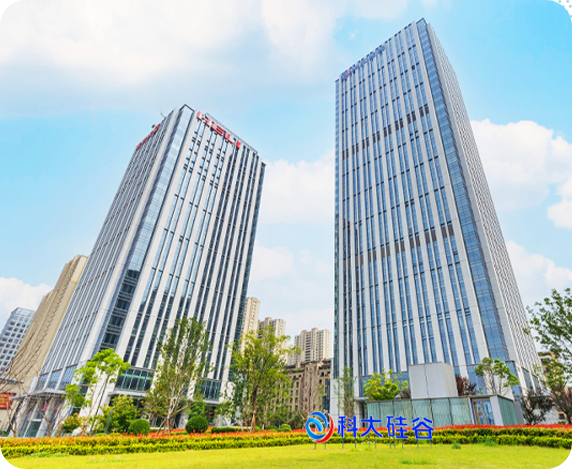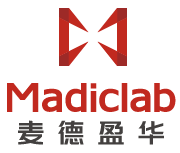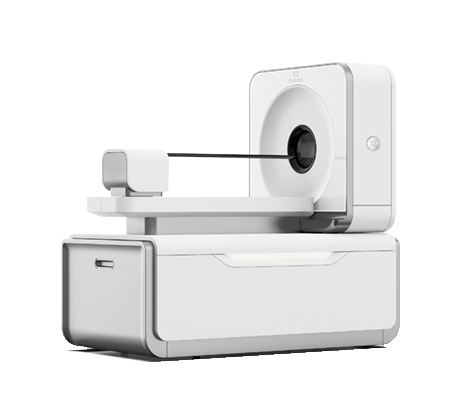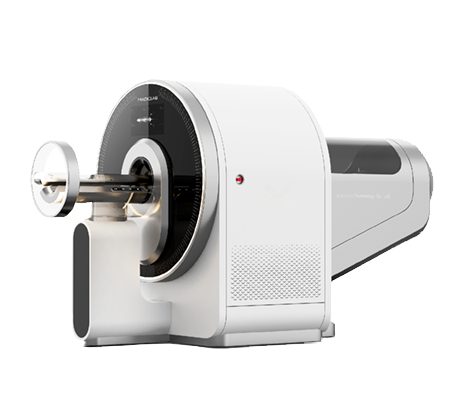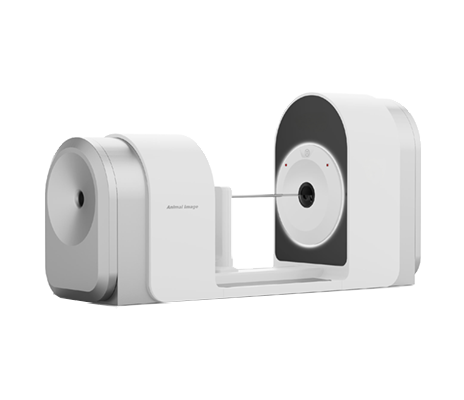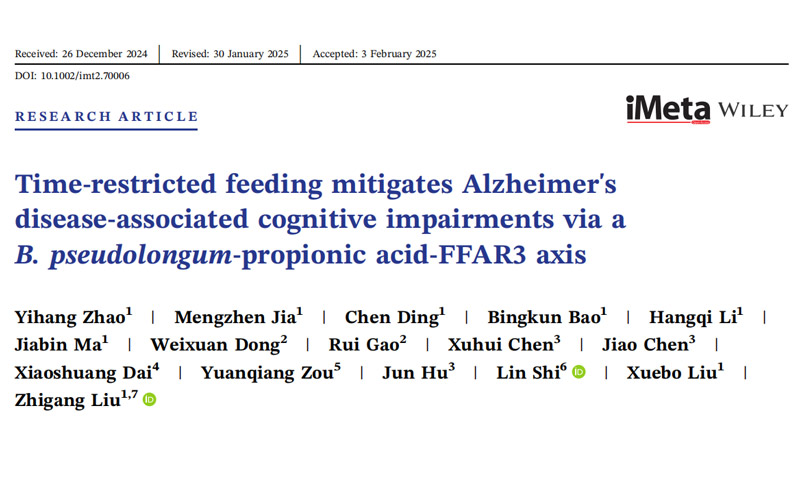Shandong Madic Technology Co., Ltd.:“Made in China” to break through the nuclear medical imaging of the light chaser
2025-06-06
In Linyi, a land full of innovation and vitality, an enterprise named “Shandong Maide Yinghua” is rewriting the competitive pattern of the global nuclear medical imaging field in the name of “Made in China”. From the breakthrough of 0.5mm spatial resolution, to the successful delivery of the international market, this enterprise was established only more than ten years ago, with independent research and development of hard-core technology, for China's high-end medical equipment labeled “world-leading”. Recently, the reporter went into Maide Yinghua, dialogue with the founder Dr. Liu Jiguo, to explore the innovation code and industrial ambition behind this “invisible champion”.Starting from “0” The Icebreaker for Made in ChinaWhat is PET? Simply put, PET reconstructs three-dimensional images (of cancer cells) through positron emission, and is a powerful tool for clinical cancer screening.After graduating from the Department of Modern Physics at CUHK with a Ph.D. in 2004, Liu Jiguo went to MD Anderson Cancer Research Center in the U.S. to work on PET equipment research and development. “PET (Positron Emission Tomography) is known as the ‘jewel in the crown of medical imaging’ and is the gold standard for cancer diagnosis, but at that time there was almost a blank in this field in China.”During his stay in the U.S., he deeply felt the constraints imposed by the technology monopoly. "PET equipment can easily be ten million price, the core technology has long been monopolized by European and American companies. Chinese patients can not afford to use, hospitals can not afford to buy, this passive situation stung me." In 2007, he decided to return to China, determined to promote the localization of PET.However, the road to entrepreneurship is far more difficult than imagined. "In 2012, we were introduced by the city of Linyi as the first high-level science and technology entrepreneurial team, and established Maide Yinghua. 'Maide Yinghua' is taken from the homonym of ‘Made in China’, which is to proclaim to the world: made in China, it is just as capable of scaling the technological peak."He admits that it took great courage to choose the name “Made in China”. "At that time, some people advised us to emphasize the domestic identity, the market may not buy. But we had to go against the trend - only by facing up to the challenges can we force ourselves to make a breakthrough."As he puts it, the early days of the business were like “climbing uphill from a pit”: the first device was sold for millions of dollars, and customers had very little trust in homegrown technology. 2015, the first order from the First Hospital Affiliated to China Medical University became a key turning point in the survival of the enterprise. “That device was our ‘lifeline’, and every part and every line of code coalesced with the team's desperate efforts.”The Ultimate Challenge of 0.42mm The Ten-Year Climb of Core Technology Autonomy“0.5mm was once the industry's recognized physical limit.” Liu Jiguo tells a story of conviction and detail: in 2010, when the team proposed a goal of “0.5-millimeter resolution,” skepticism was rampant. "Mouse imaging needs to achieve 1/10 of the resolution of human devices, i.e., 0.5 millimeters. But at that time, the highest international level was only 0.7 millimeters, which many peers considered an ‘impossible task’."The team opted for a step-by-step breakthrough: realizing 0.6 mm in 2019, conquering 0.5 mm in 2020, and eventually raising the resolution to 0.42 mm. "Behind this are hundreds of process innovations. For example, crystal processing precision has been increased from the industry-universal 10 microns to 3 microns, which alone jumped detector performance by 30%." He concludes, “Disruptive innovation is not a breakthrough at a single point, but the extreme polishing of the whole chain. 5% optimization of each of the 10 links can increase the overall performance by 50%.”Nowadays, the resolution of PET equipment of MET is the first in the world, and the related technology has been included in the “14th Five-Year Plan” textbook “Nuclear Medicine” of national medical schools. Liu Jiguo exclaimed: "It took us ten years from following to leading. This proves that Made in China can not only ‘live’, but also define new standards in the industry."The Golden Age of Nuclear Medicine Ecological Layout of a Trillion-Dollar Market“Nuclear medicine physics is ushering in the era of ‘tripod’.” Liu Jiguo analysis, imaging diagnostics, radiation therapy, nuclide-targeted drugs three major directions constitute a trillion-dollar market. Among them, the imaging equipment market size of more than 300 billion yuan, and nuclide drugs in recent years, the growth rate of up to 40%. “The policy dividend is also ramping up - in 2021, the state released the Medium and Long-term Development Plan for Medical Isotopes, which explicitly supports the development of the nuclear technology application industry.”In the face of opportunities, McDonald's chooses to “focus on imaging, ecological synergy”. “We will continue to deepen our efforts in PET, SPECT, and CT multimodal imaging equipment, and at the same time, we will unite upstream and downstream to build a ‘Linyi nuclear medicine ecosystem’.” He revealed that the company has organized the “Linyi Nuclear Medicine Molecular Imaging Conference” for ten consecutive years, attracting dozens of academicians and thousands of experts. “Our goal is to make Linyi a nuclear medicine innovation highland, so that academic exchanges can be transformed into industrial landing.”In the internationalization layout, the enterprise also has a firm pace. 2023, the first PET equipment exported to the U.S. completed loading, and the second one will be delivered soon. "In the next three years, the proportion of overseas orders is planned to increase from 10% to 50%. Chinese technology should not only serve the local community, but also participate in global competition."Beyond Business Social responsibility and corporate culture run in both directions“Businesses can't survive without making a profit, but the real value lies in pushing the industry forward.” Liu Jiguo shared a predecessor's admonition: “Only when China's nuclear medicine is good, can the enterprise be good.” To this end, Meade has always practiced the concept of “technology for all” - breaking through the resolution limit through independent research and development, making the image clarity jump to a new height in the industry, and helping grassroots hospitals to build a precise diagnosis and treatment system.Social responsibility is also reflected in the cultivation of talents. “Linyi used to be a ‘talent depression’, but we firmly believe that ‘first-class talents determine first-class products’.” The company has established a culture of “extreme challenges”: encouraging the team to overcome “impossible goals” and improving the ability of employees through internal training. "Ten years ago, when we proposed the 0.5mm target, even the industry leaders thought it was crazy. But it was this ‘dare to think, dare to do’ boldness that transformed the mediocre team into the top team."The next ten years defines the new height of “China's creativity”.Standing at a new starting point, Liu Jiguo has drawn a clear blueprint for the future of METC: in the field of technology depth, research and development of the next generation of ultra-high definition PET-CT, and exploration of artificial intelligence-assisted diagnostic systems; in the field of industrial synergy, the development of nuclide-targeted drugs in cooperation with pharmaceutical companies, and to open up the closed loop of “diagnosis - treatment”; In terms of industrial synergy, we will cooperate with pharmaceutical companies to develop nuclear-targeted drugs and open up the closed loop of “diagnosis and treatment”; and in terms of global layout, we will expand the market in Europe and America and realize "localized innovation + globalized application.“In the past ten years, we have proved the tenacity of China's manufacturing; in the next ten years, we want to make ‘China's creation’ become the benchmark of global nuclear medicine.” At the end of the interview, Liu Jiguo's gaze is firm and fiery.From the old area of Yimeng to the world stage, the story of Maide Yinghua is not only an epic of the growth of an enterprise, but also a song of China's high-end manufacturing breakthrough. Here, the precision of 0.42 millimeters measures the depth of technology, and also marks the temperature of industry serving the country.When “Made in China” tore off the old labels and reshaped the global competition pattern with innovation and commitment, the journey of Madec Yinghua is the best footnote of this era.
